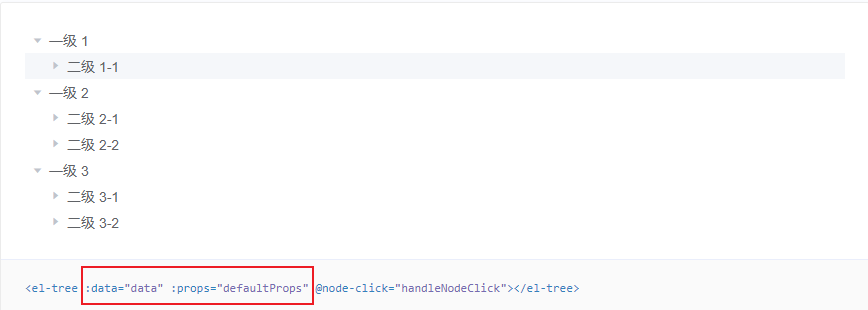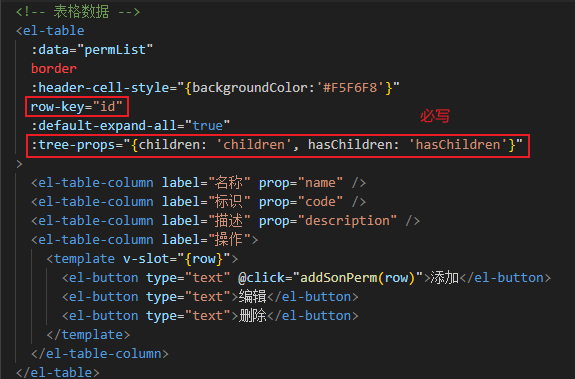需求:
要做出如下图所示的 树形表格,也就是数据之间有父子类关系的这种,可以点击展开、收缩
原数据示例
[
{
"id": 1,
"name": "组织架构",
"description": "组织架构",
"type": 1,
"code": "department",
"pid": 0,
"enVisible": "1"
},
{
"id": 2,
"name": "角色管理",
"description": "角色管理菜单",
"type": 1,
"code": "role",
"pid": 0,
"enVisible": "1"
},
{
"id": 45,
"name": "子权限",
"description": "",
"type": 2,
"code": "sonPerm1",
"pid": 1,
"enVisible": "0"
},
{
"id": 46,
"name": "22",
"description": "",
"type": 2,
"code": "22",
"pid": 2,
"enVisible": "0"
}
]
转化为树状数据
[
{
"id": 1,
"name": "组织架构",
"description": "组织架构",
"type": 1,
"code": "department",
"pid": 0,
"enVisible": "1",
"children": [
{
"id": 45,
"name": "子权限",
"description": "",
"type": 2,
"code": "sonPerm1",
"pid": 1,
"enVisible": "0"
}
]
},
{
"id": 2,
"name": "角色管理",
"description": "角色管理菜单",
"type": 1,
"code": "role",
"pid": 0,
"enVisible": "1",
"children": [
{
"id": 46,
"name": "22",
"description": "",
"type": 2,
"code": "22",
"pid": 2,
"enVisible": "0"
}
]
}
]
实现
1.使用树形组件
在学习树形表格之前,肯定得先搞懂普通的树形组件是怎么搞的,然后将其套到表格中就好了,请参考ElementUI官方文档中的使用方法


2.使用树形表格
下面这段话出自博客:Element-ui 表格实现树形结构表格_elementui树形表格_在奋斗的大道的博客-CSDN博客
在el-table中,支持树类型的数据的显示。当 row 中包含 children 字段时,被视为树形数据。
渲染树形数据时,必须要指定 row-key。支持子节点数据异步加载。
通过指定 row 中的 hasChildren 字段来指定哪些行是包含子节点。children 与 hasChildren 都可以通过 tree-props 配置。
row-key="id"和:tree-props="{children: 'children', hasChildren: 'hasChildren'}是必须的。

代码参考
<el-table
:data="permList"
border
:header-cell-style="{backgroundColor:'#F5F6F8'}"
row-key="id"
:default-expand-all="true"
:tree-props="{children: 'children', hasChildren: 'hasChildren'}"
>
<el-table-column label="名称" prop="name" />
<el-table-column label="标识" prop="code" />
<el-table-column label="描述" prop="description" />
<el-table-column label="操作">
<template v-slot="{row}">
<el-button type="text" @click="addSonPerm(row)">添加</el-button>
<el-button type="text">编辑</el-button>
<el-button type="text">删除</el-button>
</template>
</el-table-column>
</el-table>
扁平数据转化为树状数据函数
export const transListToTree = (list, rootPid) => {
const result = []
list.forEach(item => {
if (item.pid === rootPid) {
const children = transListToTree(list, item.id)
if (children.length > 0) {
item.children = children
}
result.push(item)
}
})
return result
}